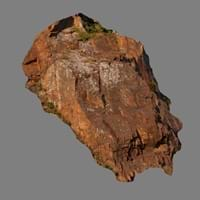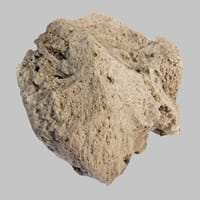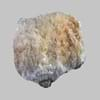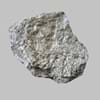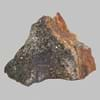Definition
Granulite is fine to medium grained metamorphic rock with a granular of polygonal crystals.
Pumice is a volcanic rock that consists of highly vesicular rough textured volcanic glass, which may or may not contain crystals
Origin
Central Europe
Spain
Discoverer
Unknown
Unknown
Etymology
From Latin granulum, a little grain or fine grained
From Old French pomis, from a Latin dialect variant of pumex
Class
Metamorphic Rocks
Igneous Rocks
Sub-Class
Durable Rock, Hard Rock
Durable Rock, Medium Hardness Rock
Group
Not Applicable
Volcanic
Other Categories
Coarse Grained Rock, Medium Grained Rock, Opaque Rock
Fine Grained Rock, Opaque Rock
Texture
Granoblastic
Vesicular
Color
Black, Brown
Beige, Colourless, Grey, Light Green, Light Grey, Pink, White, Yellow- grey
Durability
Durable
Durable
Scratch Resistant
Yes
Yes
Appearance
Veined or Pebbled
Vesicular
Interior Uses
Bathrooms, Countertops, Decorative Aggregates, Entryways, Flooring, Homes, Hotels, Interior Decoration, Kitchens, Stair Treads
Decorative Aggregates, Flooring, Homes, Interior Decoration
Exterior Uses
As Building Stone, As Facing Stone, Garden Decoration, Office Buildings, Paving Stone
As Building Stone, As Facing Stone, Garden Decoration, Paving Stone
Other Architectural Uses
Curbing
Curbing, Powder
Construction Industry
As Dimension Stone, Building houses or walls
As Dimension Stone, Cement Manufacture, for Road Aggregate, In landscaping and horticulture, Making natural cement, Production of lightweight concrete blocks
Medical Industry
Not Yet Used
As an abrasive in skin exfoliating products, In Chemical and Pharmaceutical Industry, Medicines and Cosmetics
Antiquity Uses
Artifacts, Monuments, Sculpture
Artifacts
Commercial Uses
Curling, Gemstone, Laboratory bench tops, Soil Conditioner, Tombstones
As a traction material on snow-covered roads, As an abrasive in pencil erasers, Fine abrasive used for polishing, Manufacture of Soap, Solvents, Dyes, Plastics and Fibres, Used in aquariums
Types
Not Available
Scoria
Features
Clasts are smooth to touch
Host Rock for Lead
Archaeological Significance
Monuments
Used
Not Yet Used
Famous Monuments
Data Not Available
Not Applicable
Sculpture
Used
Not Yet Used
Famous Sculptures
Data Not Available
Not Applicable
Pictographs
Not Used
Used
Petroglyphs
Not Used
Used
Figurines
Used
Not Yet Used
Formation
Granulite is a fine-grained granular metamorphic rock in which the main component minerals are feldspars and quartz and forms at high temperature and pressure conditions.
Pumice rock forms when the magma cools so quickly that atoms in the melt are not able to arrange themselves into a crystalline structure.
Mineral Content
Amphibole, Biotite, Feldspar, Hornblade, Micas, Muscovite or Illite, Plagioclase, Quartz
Aluminum Oxides, Calcite, Carbonate, Iron Oxides, Silica
Compound Content
Aluminium Oxide, CaO, Carbon Dioxide, Iron(III) Oxide, FeO, Potassium Oxide, MgO, MnO, Sodium Oxide, Phosphorus Pentoxide, Sulfur Dioxide, Titanium Dioxide
Al, Aluminium Oxide, CaO, Carbon Dioxide, MgO, Silicon Dioxide
Types of Metamorphism
Not Applicable
Burial Metamorphism, Impact Metamorphism
Types of Weathering
Biological Weathering, Chemical Weathering
Biological Weathering, Chemical Weathering, Mechanical Weathering
Types of Erosion
Chemical Erosion, Water Erosion, Wind Erosion
Chemical Erosion, Coastal Erosion, Glacier Erosion, Sea Erosion, Water Erosion, Wind Erosion
Grain Size
Medium to Coarse Grained
Fine Grained
Fracture
Not Available
Planar
Streak
White
White, Greenish White or Grey
Porosity
Very Less Porous
Highly Porous
Cleavage
Imperfect
Perfect
Toughness
Not Available
3
Specific Gravity
2.8-3.0
2.86
Transparency
Opaque
Opaque
Density
3.06-3.33 g/cm3
0.25-0.3 g/cm3
Resistance
Heat Resistant, Wear Resistant
Impact Resistant, Pressure Resistant
Deposits in Eastern Continents
Asia
China, India, Iran, Saudi Arabia, Sri Lanka, Taiwan, Thailand, Turkey, Vietnam
Afghanistan, Indonesia, Japan, Russia
Africa
Angola, Egypt, Madagascar, Nigeria, South Africa
Ethiopia, Kenya, Tanzania
Europe
Austria, Belgium, Finland, France, Germany, Italy, Norway, Sardinia, Spain, Switzerland, The Czech Republic, Venezuela
Greece, Hungary, Iceland, Italy, Turkey
Others
Not Yet Found
Not Yet Found
Deposits in Western Continents
North America
Canada, USA
Bahamas, Barbados, Canada, Costa Rica, Cuba, Jamaica, Mexico, USA
South America
Not Yet Found
Argentina, Chile, Ecuador, Peru
Deposits in Oceania Continent
Australia
Not Yet Found
New Zealand, Western Australia
All about Granulite and Pumice Properties
Know all about Granulite and Pumice properties here. All properties of rocks are important as they define the type of rock and its application. Granulite belongs to Metamorphic Rocks while Pumice belongs to Igneous Rocks.Texture of Granulite is Granoblastic whereas that of Pumice is Vesicular. Granulite appears Veined or Pebbled and Pumice appears Vesicular. The luster of Granulite is vitreous while that of Pumice is earthy. Granulite is available in black, brown colors whereas Pumice is available in beige, colourless, grey, light green, light grey, pink, white, yellow- grey colors. The commercial uses of Granulite are curling, gemstone, laboratory bench tops, soil conditioner, tombstones and that of Pumice are as a traction material on snow-covered roads, as an abrasive in pencil erasers, fine abrasive used for polishing, manufacture of soap, solvents, dyes, plastics and fibres, used in aquariums.
